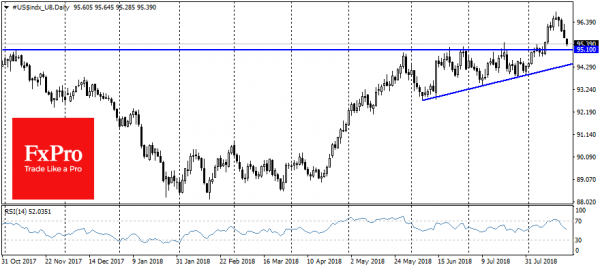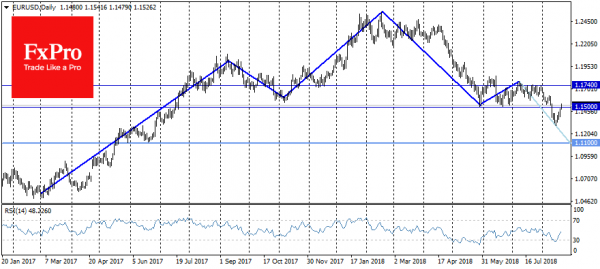The dollar fell under pressure after Trump’s interview with Reuters, where he reiterated that he is “not thrilled” by the actions of the Fed and prefers a policy of low interest rates. The dollar index lost 0.7% over the past 24 hours. EURUSD up to 1.1530, the maximum in the last 2 weeks.
Previously Trump used similar verbal interventions in an attempt to stop the U.S. Dollar rally. Such comments were made on July 19, which restrained the dollar from growth for several weeks. Investors were waiting for Powell’s reaction to the president’s dissatisfaction. However, the Fed has not changed the rhetoric, hinting at the willingness to raise rates as soon as September. In addition to raising the rate of the Fed, the dollar is also supported by Trump’s policy. Trade conflicts with China and diplomatic rifts with Turkey raise the demand for protective assets away from the epicentre of the crisis. Under these conditions, the dollar has played a role of safe-haven asset.
Despite the fact that the central bank is pursuing an independent policy, the president and his administration are nominating candidates for key positions in the Fed, and several appointments are still to be made this year. The markets fear that Trump’s words may be a signal to search for more “dovish” candidates for key positions.
Trump’s comments could play an important role in the dollar’s dynamics. EURUSD has returned to the area above 1.1500, back to the trading range from May to mid-August. If the pair is able to stay above this mark by the end of the day, technically it will cross out the recent dollar rally. In addition, the relative strength index (RSI) has returned from oversold levels for EURUSD that is another strong bearish signal against dollar.
Thus, Trump’s words could seriously affect the technical picture of the dollar for the next few days, preventing it from pausing the rally with potential targets for EURUSD near 1.11 on even lower in 1.04 area. However, for Trump dollar is not a goal, but a means to achieve his political goals. The active imposition of sanctions, as was the case earlier this year against Iran, Turkey and Russia, will preserve the status of a protective asset for the dollar, and the new tariffs continue to force the Fed to raise rates to fight inflation pressure.















